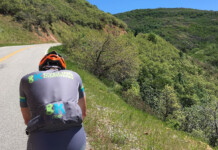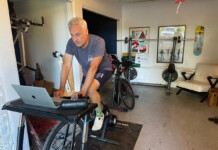By Pat Casey — How many of you reading this article have been told to “stretch more” or “add some yoga” into your routine? Mobility practice and maintenance of your body’s functional ranges of motion are often the first items to fall off on our training calendars. Most riders I work with at Peak State Fit acknowledge that they need to improve their movement quality, but they let their maintenance routine take a back seat in their busy lives. Many will mention that they stretch, but don’t have any rhyme or reason or process of how long per stretch or why they are stretching the muscles they do.
Having a purpose driven routine for your recovery, mobility, strength, and core stability are not only tremendously beneficial to your riding, but will make you a more productive human in your various roles in life, and help you as you age (sorry, but we all are). Expanding your knowledge and how to address pervasive muscle tension might be transformative for you, so do yourself a favor and try this out next time you unroll your yoga mat for some quality movement and restoration.
What is Really Causing Muscle Tension?
Although stretching provides a temporary relief, feels good and aids in active recovery, many mainstream methods of stretching barely scratch the surface of the underlying reason for ‘why does muscle tension, tendon pain, or movement pattern discrepancies or encumbrances occur in the first place?’
The answer to this question is multifactorial. But at the very root of muscle tension and subsequent tendon pain or movement pattern imbalances are our brains. We hope to address symptoms of our pains and tensions through stretching routine, but rarely do we try to send a signal to change or disrupt the environment that our body is in. When an issue is embedded neurologically, it requires change to the pattern.
What is P.A.I.L.s and R.A.I.L.s?
The solution is found in changing the pattern. Presenting the muscle with a timed stimulus that allows the muscle to relax, or reset itself. This is done by adding an active, or isometric load to a stretched position. This way of “hacking the system” is known as P.A.I.L.s and R.A.I.L.s – which stand for passive and active angular isometric loading. This method is also known as Kinstretch and Functional Range Conditioning.
Why is this the Preferred Method? How and why does it work?
Reciprocal inhibition is a neurological mechanism of the muscles on one side of a joint relaxing in order to allow contraction on the other side of the joint. While these should function in synchronicity for optimal movement, due to our habitual movement patterns, mostly seated lifestyles, and even from the sport of cycling, we can expect some imbalances between these extensors and flexors that are commonly used: particularly our quadriceps, anterior hip and core muscles, and hip abductors and adductors.
First, the P.A.I.L.s and R.A.I.L.s are meant to retrain not only range of motion, but also the strength in the joint, and the brain’s familiarity with increased function at those end ranges. The Progressive portion is an active movement, which sends signals to your brain that the end range of your stretched position is not a threat to the body. Then, by using an antagonist muscle to pull the joint into a greater range, activating motor units and changing the relationship between the extensors and flexors that are causing the muscle tension in the first place.
There are many resources and available information on responsibly using this technique to address muscle tension, rotational impingements and mobility issues, as well as changing neuro drive to various muscles. First, understanding the appropriate amount of time and intensity will help the most in achieving the goal of the technique. Below, I will provide you with a guide to add P.A.I.L.s and R.A.I.L.s into a common stretch. Then, you may add this to stretches you are already familiar with and address some of your own tight muscles and common aches!
“P.A.I.L.’s/ R.A.I.L.’s is an isometric loading protocol created by Dr. Andreo Spina. In other words, this is when we are stretching and contracting the muscles that are being lengthened/ stretched followed by the opposing muscles to pull us deeper into the stretch.” (https://www.markowtrainingsystems.com/2020/07/09/p-a-i-l-s-and-r-a-i-l-s-explained/)
- How to start: Position your body in a “90 90 Pose” with one leg out front in external rotation, and the other in an internal rotated position.
- Begin by spending approximately 2 minutes in the starting position of each stretch. Breathe steady with a 4 count in, 4 count out.
- After 2 minutes, begin with a progressive contraction for 20 seconds (P.A.I.L.s). Here, you will press into the externally rotated knee into the floor.
- Start with a 20% contraction and progress to a 40-50% effort.
- Relax for 5 seconds.
- Then, follow this movement with your regressive pattern. Inhale, then on an exhale, lift the externally rotated leg up for 20-30 seconds.
- For internal hip rotation, begin by performing the P.A.I.L.s contraction to your internally rotated knee.
- Hold for 20-30 seconds, progressively increasing intensity.
- Then, without lifting the knee, raise your ankle and deepen the internal rotation of your hip.
- Hold this internally rotated position for 20-30 seconds. Challenge yourself in each regressive pattern – these take control and focus!
- Repeat 3X for each, alternating your progressive and regressive movements. With each progressive (P.A.I.L.s) movement, increase your effort on each set. On the third and final set, you should reach maximal contraction. After you’re finished, rehydrate and allow your body to recover. This is training!
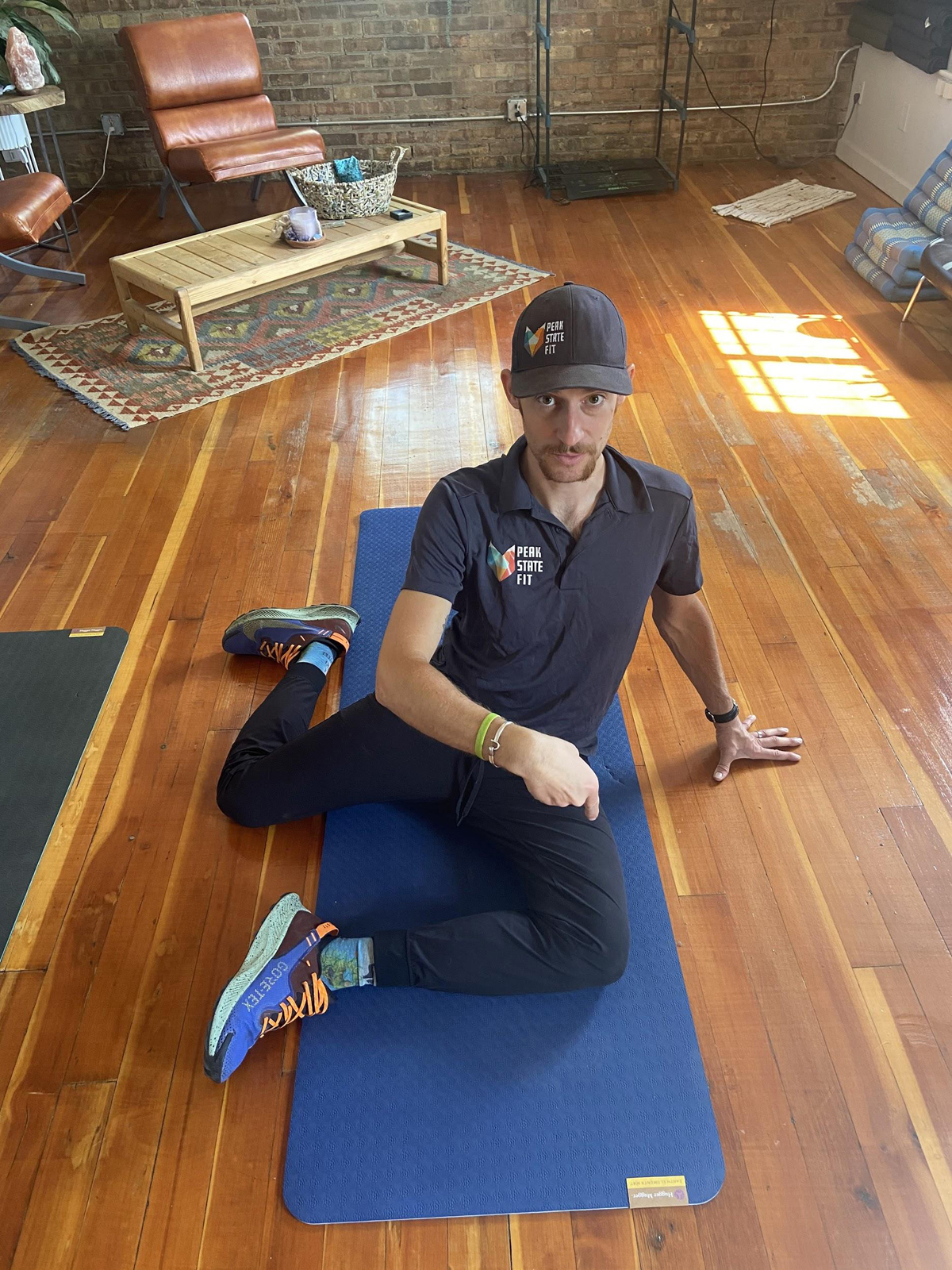
After 2 minutes, begin with a progressive contraction for 20 seconds (P.A.I.L.s). Here, you will press into the externally rotated knee into the floor.
Start with a 20% contraction and progress to a 40-50% effort.
Relax for 5 seconds.
Photo by Heather Casey
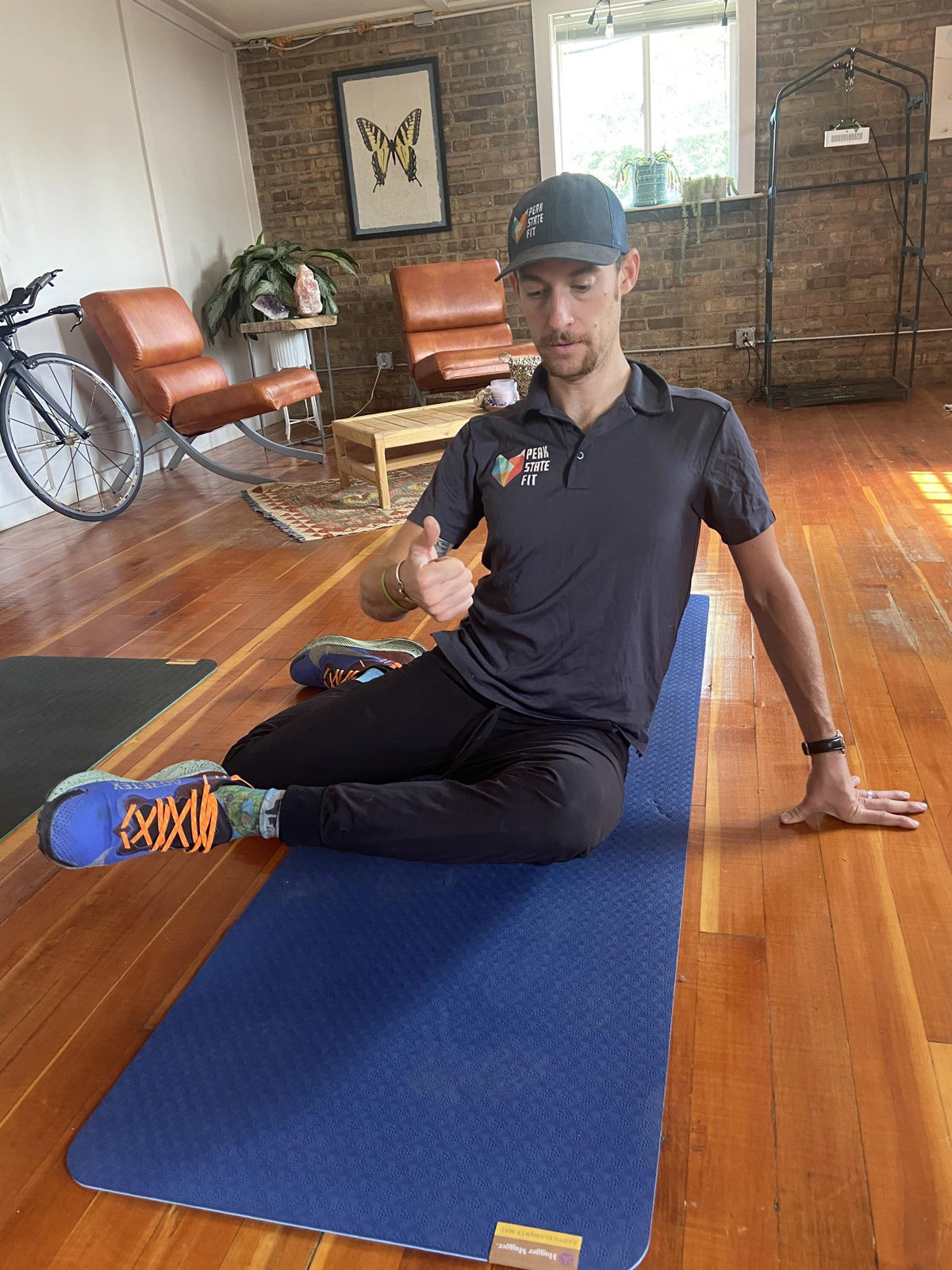
Photo by Heather Casey
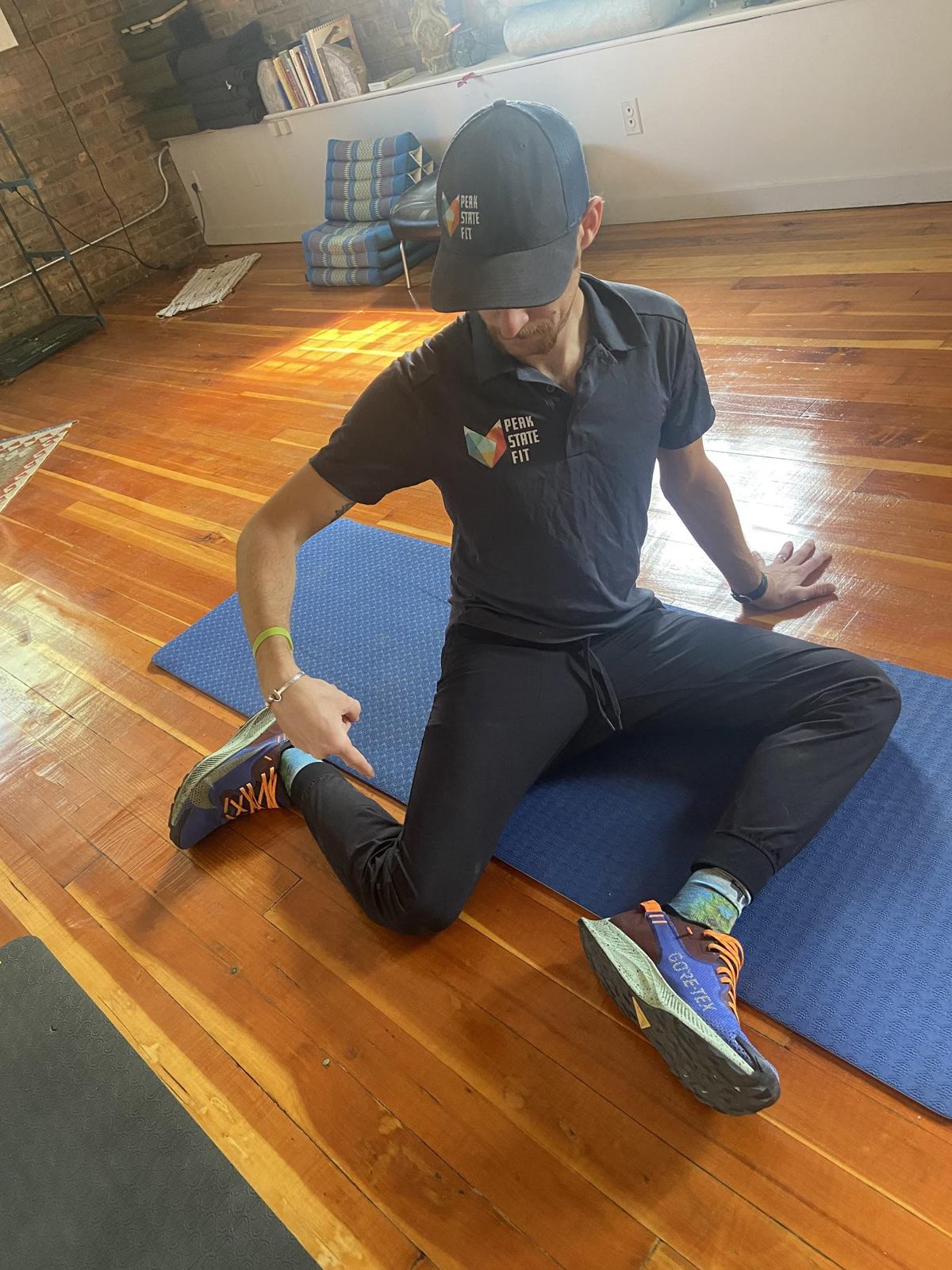
Start with a 20% contraction and progress to a 40-50% effort. Increase this effort for subsequent sets, starting at 30%, 40%, etc.
Relax for 5 seconds. Photo by Heather Casey
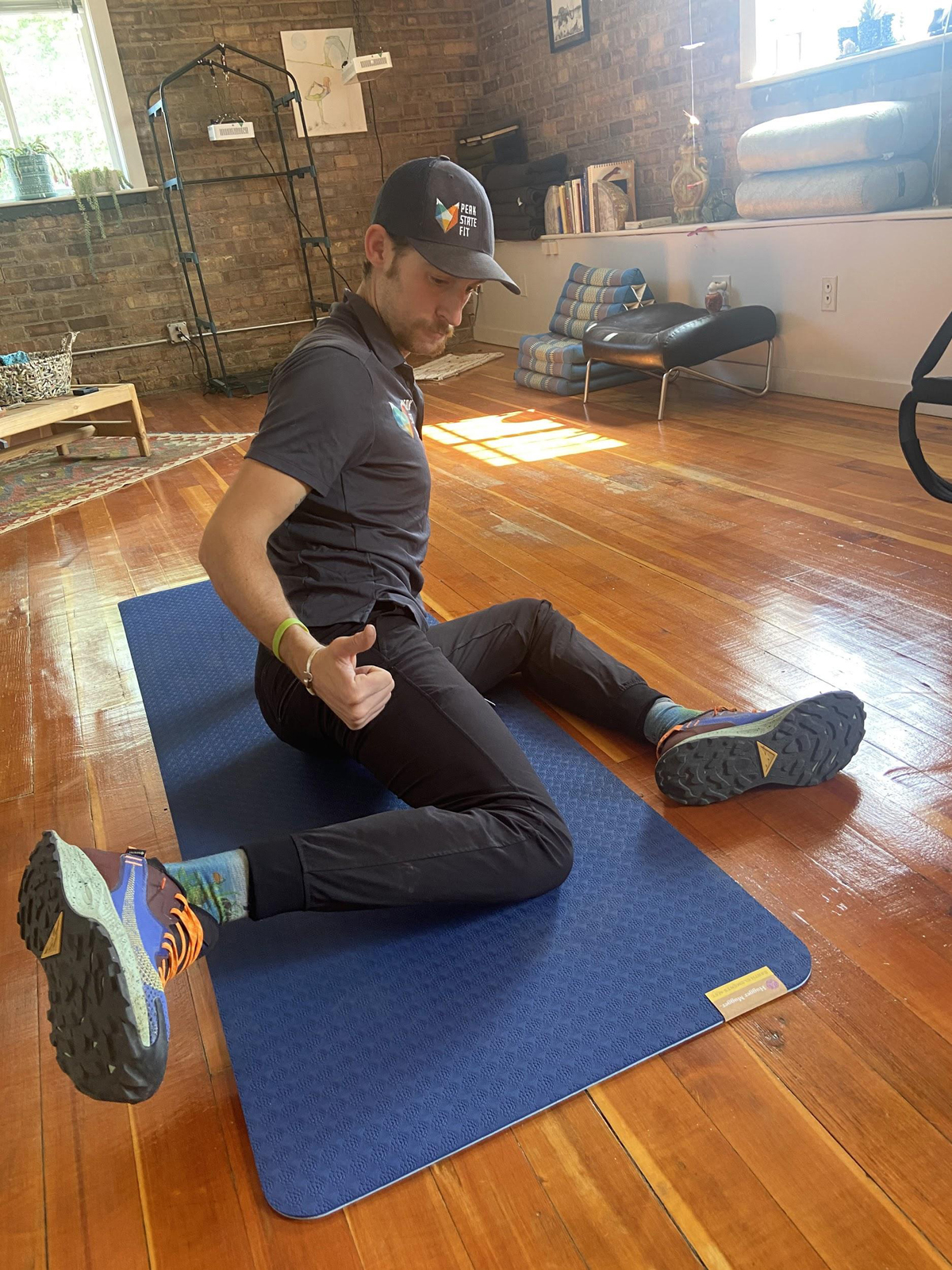
Repeat 3X for each, alternating your progressive and regressive movements. With each progressive (P.A.I.L.s) movement, increase your effort on each set. On the third and final set, you should reach maximal contraction. After you’re finished, rehydrate and allow your body to recover. This is training!
Photo by Heather Casey
References:
- Power, G. a., Dalton, B. H., & Rice, C. L. (2013). Human neuromuscular structure and function in old age: A brief review. Journal of Sport and Health Science, 2(4), 215–226. https://doi.org/10.1016/j.jshs.2013.07.001
- McHugh, M. P., & Cosgrave, C. H. (2010). To stretch or not to stretch: The role of stretching in injury prevention and performance. Scandinavian Journal of Medicine and Science in Sports, 20(2), 169–181. https://doi.org/10.1111/j.1600-0838.2009.01058.x
- Jansson, E., & Kaijser, L. (1977). Muscle adaptation to extreme endurance training in man. Acta Physiologica Scandinavica, 100(3), 315–24. https://doi.org/10.1111/j.1748-1716.1977.tb05956.x
- Crone C. Reciprocal inhibition in man. Dan Med Bull. 1993 Nov;40(5):571-81. PMID: 8299401.



